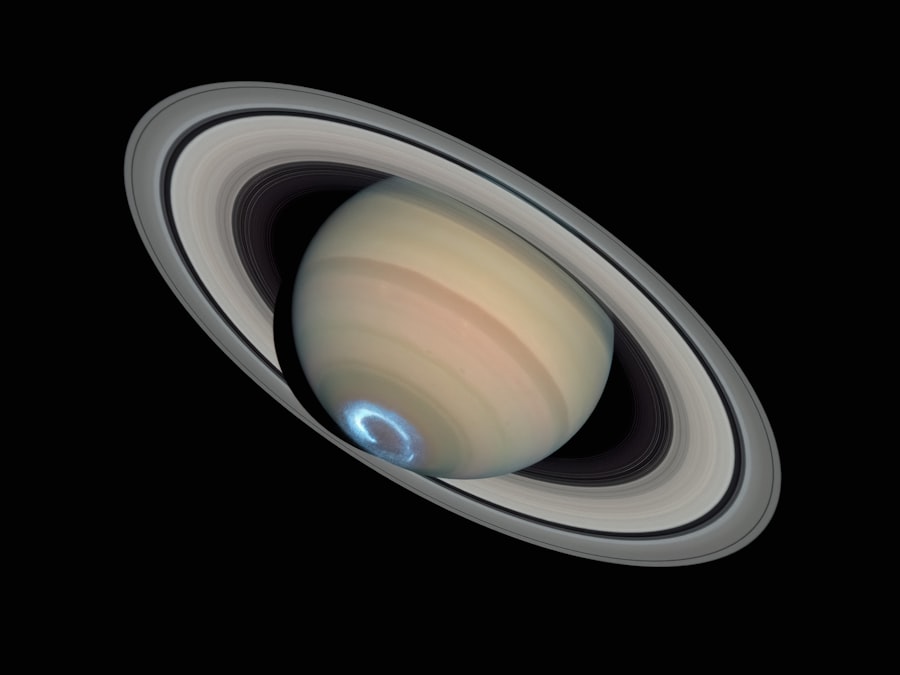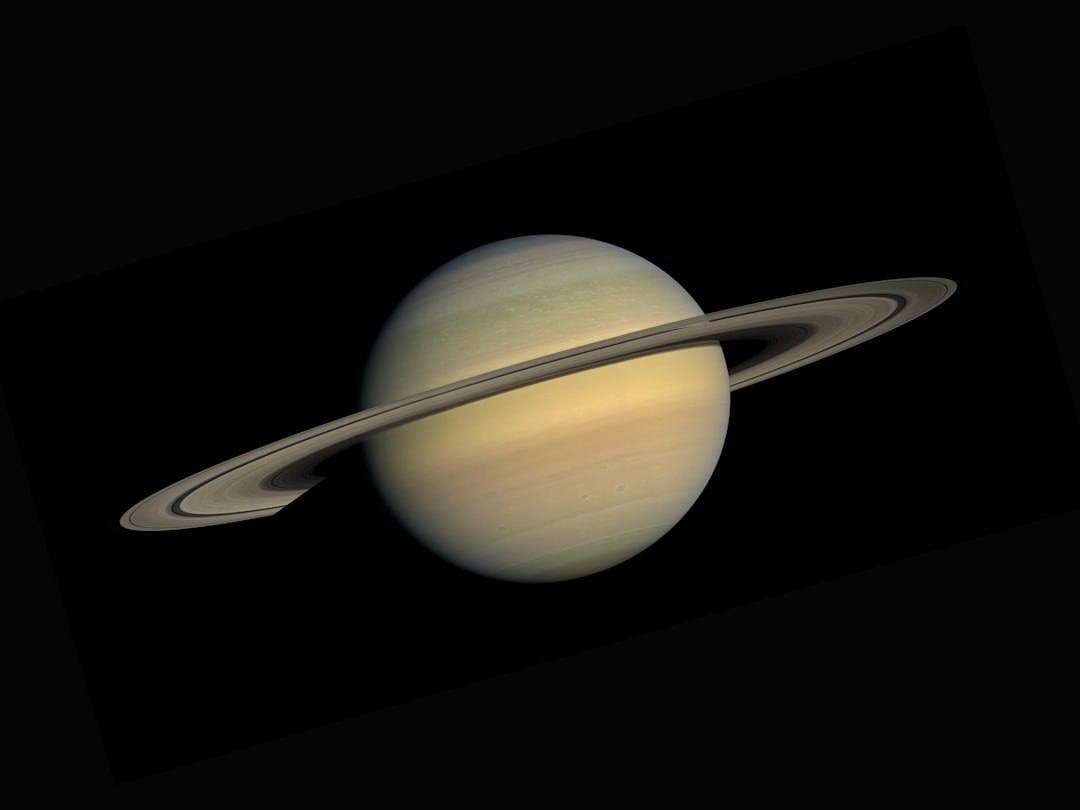Saturn, the sixth planet from the Sun, is renowned for its stunning and intricate ring system, which has captivated astronomers and space enthusiasts alike for centuries. However, beyond the visual splendor of these rings lies a fascinating phenomenon known as “ring rain.” This term refers to the process by which material from Saturn’s rings falls into the planet’s atmosphere, creating a unique interaction between the two. The study of ring rain not only enhances the understanding of Saturn’s atmospheric dynamics but also sheds light on the complex interplay between the planet and its iconic rings.
As researchers delve deeper into this phenomenon, they uncover insights that challenge existing theories about planetary atmospheres and their evolution. The concept of ring rain is particularly intriguing because it highlights the dynamic nature of Saturn’s rings. These rings are not merely static structures; they are active systems that contribute to the planet’s atmospheric composition.
The interaction between the rings and Saturn’s atmosphere raises questions about how such processes might influence weather patterns, atmospheric chemistry, and even the planet’s magnetic field. As scientists continue to explore this captivating subject, they are piecing together a more comprehensive picture of Saturn as a whole, revealing the intricate connections that exist within this gas giant.
Key Takeaways
- Saturn’s ring rain is a phenomenon where material from the planet’s rings is pulled into the atmosphere by gravity and falls towards the planet as rain.
- Ring rain was first discovered in 2013 by NASA’s Cassini spacecraft, which observed the material being pulled from the rings and into the planet’s atmosphere.
- The composition of ring rain is primarily water, with smaller amounts of other organic compounds and trace elements.
- The mechanism of ring rain involves the interaction between Saturn’s magnetic field and the charged particles in the rings, causing them to be pulled into the planet’s atmosphere.
- Ring rain has a significant impact on Saturn’s atmosphere, contributing to its composition and influencing its overall dynamics.
Discovery of Ring Rain
The discovery of ring rain was not an instantaneous revelation but rather a gradual realization that emerged from decades of observation and research. Initial hints of this phenomenon came from data collected by the Voyager spacecraft during their flybys of Saturn in the 1980s. These missions provided invaluable insights into the structure and composition of Saturn’s rings, but it was not until later observations from the Cassini spacecraft that scientists began to fully appreciate the implications of ring rain.
Cassini, which orbited Saturn from 2004 to 2017, offered a wealth of data that revealed the intricate interactions between the rings and the planet’s atmosphere. One of the pivotal moments in understanding ring rain occurred when researchers analyzed Cassini’s measurements of Saturn’s upper atmosphere. They detected an unexpected influx of material that appeared to originate from the rings.
This finding prompted further investigation into how particles from the rings could be falling into Saturn’s atmosphere, leading to a deeper exploration of the mechanisms behind this phenomenon. The discovery of ring rain not only expanded knowledge about Saturn but also opened new avenues for research into planetary atmospheres and their interactions with surrounding celestial bodies.
Composition of Ring Rain

The composition of ring rain is a critical aspect of understanding its impact on Saturn’s atmosphere. The material that falls from the rings primarily consists of water ice, along with various other compounds such as ammonia and organic molecules. This diverse composition reflects the complex nature of Saturn’s rings, which are made up of countless particles ranging in size from tiny grains to larger boulders.
The presence of these materials in the ring rain has significant implications for the chemical makeup of Saturn’s atmosphere. As ring rain descends into Saturn’s atmosphere, it introduces new elements and compounds that can influence atmospheric chemistry. For instance, water vapor generated from the melting ice can contribute to cloud formation and precipitation patterns within the atmosphere.
Additionally, organic molecules may play a role in chemical reactions that affect atmospheric dynamics. Understanding the precise composition of ring rain is essential for unraveling how these materials interact with Saturn’s atmosphere and contribute to its overall behavior.
Mechanism of Ring Rain
| Parameter | Value |
|---|---|
| Ring Rain Mechanism | Gravitational forces pulling ring particles into Saturn’s atmosphere |
| Ring Particle Size | From tiny dust grains to larger boulder-sized chunks |
| Ring Rain Rate | Estimated to be about 10,000 kilograms per second |
| Impact on Saturn’s Atmosphere | Contributes to the composition and dynamics of the planet’s atmosphere |
The mechanism behind ring rain involves a complex interplay of gravitational forces, electromagnetic interactions, and atmospheric dynamics. As particles from Saturn’s rings are influenced by the planet’s gravity, they can be pulled inward toward the atmosphere. This process is further complicated by electromagnetic forces generated by Saturn’s magnetic field, which can affect the trajectory of ring particles as they descend.
Once these particles enter Saturn’s atmosphere, they encounter varying temperatures and pressures that can lead to their disintegration or transformation. For example, as ice particles fall deeper into the atmosphere, they may vaporize due to increasing temperatures, releasing water vapor into the surrounding environment. This transformation is crucial for understanding how ring rain contributes to atmospheric processes such as cloud formation and precipitation.
Impact of Ring Rain on Saturn’s Atmosphere
The impact of ring rain on Saturn’s atmosphere is profound and multifaceted. As material from the rings enters the atmosphere, it alters the chemical composition and physical properties of the gaseous envelope surrounding the planet. One significant effect is the introduction of water vapor, which can influence cloud formation and weather patterns on Saturn.
The presence of additional water in the atmosphere may lead to increased humidity levels, potentially affecting storm systems and atmospheric circulation. Moreover, ring rain can also contribute to seasonal variations in Saturn’s atmosphere.
Such variations may manifest as shifts in wind patterns or alterations in storm activity, providing researchers with valuable insights into how external factors influence atmospheric behavior on gas giants like Saturn.
The Role of Ring Rain in Saturn’s Magnetic Field

The relationship between ring rain and Saturn’s magnetic field is another area of interest for scientists studying this phenomenon. Saturn possesses a powerful magnetic field generated by its rapid rotation and conductive interior. The influx of charged particles from ring rain can interact with this magnetic field, potentially influencing its strength and configuration.
This interaction raises intriguing questions about how external material can affect a planet’s magnetic environment. Furthermore, understanding how ring rain contributes to magnetic field dynamics may provide insights into similar processes occurring on other celestial bodies within our solar system and beyond. By studying Saturn’s unique magnetic environment in conjunction with ring rain, researchers can develop more comprehensive models that explain how planetary atmospheres and magnetic fields interact across different contexts.
Observations and Studies of Ring Rain
Observations and studies of ring rain have been significantly advanced by missions like Cassini, which provided a wealth of data during its time in orbit around Saturn. The spacecraft utilized a variety of instruments to measure atmospheric composition, temperature variations, and particle influx from the rings. These observations have allowed scientists to create detailed models that simulate how ring rain interacts with Saturn’s atmosphere over time.
In addition to spacecraft missions, ground-based telescopes have also played a role in studying ring rain by providing complementary data on Saturn’s atmospheric phenomena. Researchers have employed spectroscopic techniques to analyze light reflected off Saturn’s atmosphere, helping to identify chemical signatures associated with ring rain. Such collaborative efforts between space missions and terrestrial observations have enriched our understanding of this complex phenomenon.
The Connection Between Ring Rain and Saturn’s Rings
The connection between ring rain and Saturn’s rings is fundamental to understanding both phenomena in their entirety. The rings themselves are composed primarily of ice particles that have been shaped by gravitational interactions with Saturn’s moons and other celestial bodies over billions of years. As these particles collide and break apart, some are ejected into space while others are drawn toward the planet’s atmosphere.
This dynamic relationship means that changes in one system can directly affect the other. For instance, if certain regions of the rings experience increased erosion due to gravitational interactions or collisions, this could lead to heightened levels of ring rain entering Saturn’s atmosphere. Conversely, alterations in atmospheric conditions resulting from ring rain could influence how material is distributed within the rings themselves.
The Future of Ring Rain Research
The future of ring rain research holds great promise as scientists continue to explore this captivating phenomenon using advanced technologies and methodologies. Upcoming missions to outer planets may provide new opportunities for direct observation and analysis of ring systems and their interactions with planetary atmospheres. These missions could yield unprecedented data that enhances understanding not only of Saturn but also other gas giants within our solar system.
Moreover, interdisciplinary approaches that combine planetary science with fields such as astrobiology and atmospheric chemistry will likely yield richer insights into how processes like ring rain shape planetary environments over time. As researchers continue to investigate these connections, they may uncover new theories that challenge existing paradigms about planetary formation and evolution.
Implications of Ring Rain for Planetary Science
The implications of ring rain extend far beyond Saturn itself; they resonate throughout the field of planetary science as a whole. By studying this phenomenon, scientists gain valuable insights into how celestial bodies interact with their surrounding environments, including atmospheres and magnetic fields. Such knowledge is crucial for understanding not only gas giants like Saturn but also exoplanets that may exhibit similar characteristics.
Furthermore, exploring processes like ring rain can inform theories about planetary habitability and evolution over time. Understanding how external materials influence atmospheric dynamics may provide clues about potential life-supporting conditions on other planets or moons within our solar system or beyond.
Understanding Saturn’s Mysterious Atmosphere
In conclusion, ring rain represents a fascinating intersection between Saturn’s iconic rings and its complex atmosphere. Through ongoing research and exploration, scientists are uncovering new layers of understanding about how these two systems interact and influence one another. The discovery of ring rain has opened up exciting avenues for inquiry into planetary atmospheres, magnetic fields, and even broader questions about planetary formation.
As researchers continue to investigate this enigmatic phenomenon, they contribute not only to our knowledge of Saturn but also to our understanding of planetary science as a whole. By unraveling the mysteries surrounding ring rain, scientists are piecing together a more comprehensive picture of gas giants like Saturn—one that reveals their dynamic nature and intricate connections within our solar system.
For a deeper understanding of this topic, you can explore a related article that discusses the implications of these findings in greater detail. Check it out here: Ring Rain and Saturn’s Atmosphere Explained.
FAQs
What causes the ring rain in Saturn’s atmosphere?
Ring rain in Saturn’s atmosphere is caused by the interaction between the planet’s magnetic field and its iconic rings. Charged water particles from the rings are pulled into the planet’s atmosphere by the magnetic field, creating a “ring rain” effect.
What is the composition of the ring rain in Saturn’s atmosphere?
The ring rain in Saturn’s atmosphere is primarily composed of water particles, which are pulled from the planet’s rings by the magnetic field. These water particles contribute to the planet’s overall water content and play a role in shaping its atmosphere.
How does ring rain impact Saturn’s atmosphere?
The ring rain in Saturn’s atmosphere contributes to the planet’s water content and plays a role in shaping its atmosphere. It also affects the planet’s ionosphere and magnetosphere, influencing the overall dynamics of Saturn’s atmosphere.
What are the implications of studying ring rain in Saturn’s atmosphere?
Studying ring rain in Saturn’s atmosphere can provide valuable insights into the planet’s water cycle, atmospheric dynamics, and the interaction between its rings and magnetic field. This research can also contribute to our understanding of planetary atmospheres and magnetospheres in general.
